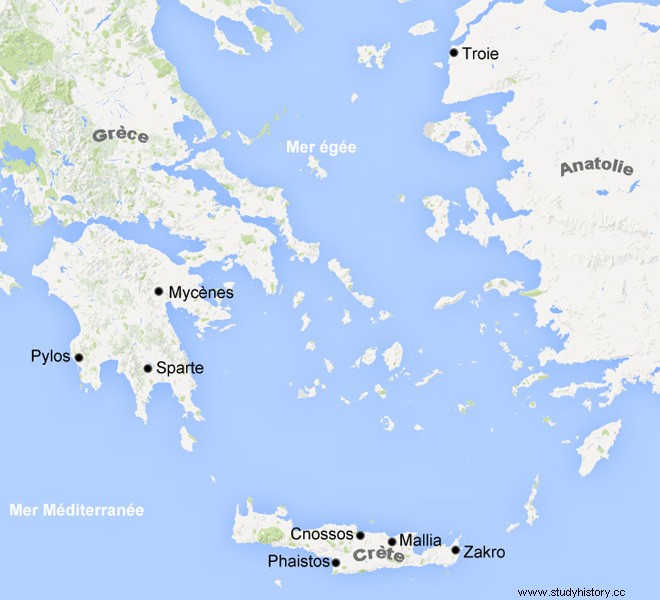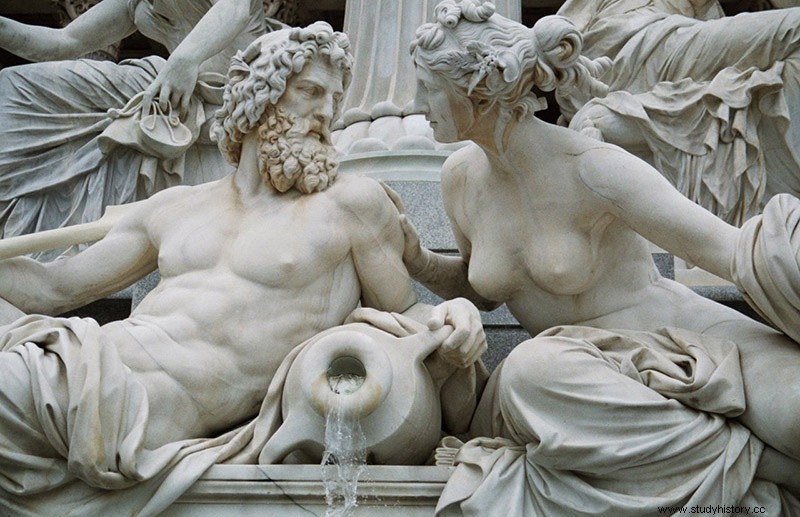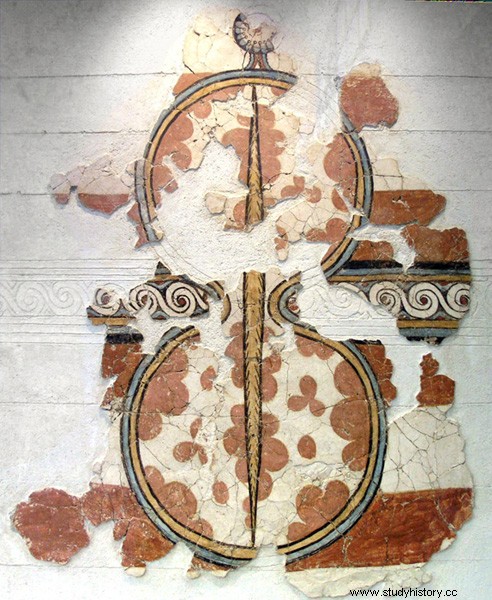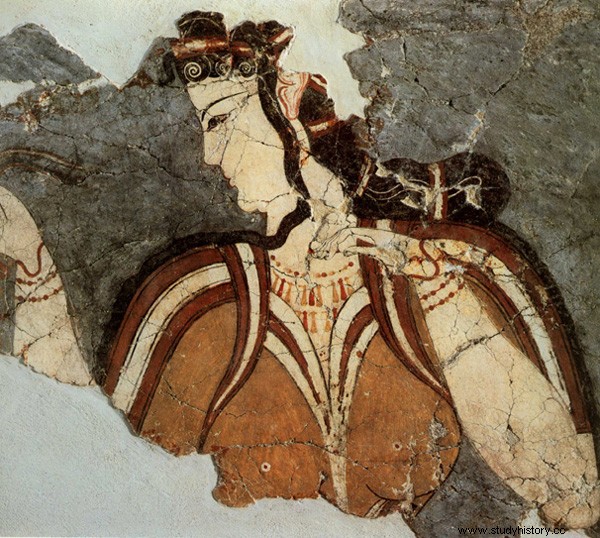
CIRCA 2000 BC
Birth of the Mycenaean civilization:
Populations of Indo-European origin infiltrate the Balkan Peninsula, slowly colonizing Greece present day and settled in the southern lands. They founded small kingdoms there, each consisting of a city surrounded by walls and land. Mycenae is the most important kingdom and it gives its name to the Mycenaean civilization. They are also called Achaeans . They impose their language, Greek, which they transcribe by adapting the Cretan characters, thus inventing a new writing, the “linear B”.
CIRCA 1600 – 1250 BC
Habitat:
The habitat is transformed and organized around a room whose center is occupied by a hearth and a hole drilled in the roof vertically acting as a chimney.

Beliefs:
The Mycenaean civilization already venerates Zeus, Hera, Poseidon, Hermes, Athena, Arthemis, Dionysos, etc., who will be the gods of classical Greece. Apollo, god from Asia Minor, and Hephaestus have also been identified.
Royalty:
The Mycenaean kings lived in magnificent palaces containing offices, workshops, warehouses and private royal apartments. The largest room, the megaron, is used for banquets and parties. Poets sing of the bravery of the king in battle, food and wine are served by numerous servants.
Write:
In the offices, the scribes account for the foodstuffs kept in the palace by writing on clay tablets.
Burials:
The Mycenaeans take great care of their dead. The tombs are located in the heart of palaces and villages, and reflect a new conception of the world, the clan, the family and the individual. The first Mycenaean kings and their families are buried in deep burial shafts, each with a stone slab at ground level. The wells are filled with gold and silver ornaments, goblets, swords and daggers. Many were found because the depth of the wells was not easily accessible to looters. The cemetery, which includes several tombs, is protected by a circular stone wall. Later, the kings of Mycenae will be buried in vast domed tombs built under huge earth mounds.

Wars and soldiers:
War is important in the life of the Mycenaeans. Kings and nobles undergo intensive warrior training. Blacksmiths craft bronze weapons, and poets praise the bravery of soldiers in battle. When a city goes to war, the king leads his army into battle. He and the nobles drive fast chariots, while the soldiers are on foot. When they are not fighting, the nobles hunt with their chariots. They kill boars and use their tusks to decorate their war helmets.
Crafts and trade:
In the palace workshops, goldsmiths, potters and spinners worked for the king. Some objects are exported. Mycenaean merchants go very far to Egypt and Italy. They trade ivory and precious metals for wine, olive oil and items such as pots, bowls and weapons. The Mycenaeans are rich and powerful.
CIRCA 1450 BC
The Mycenaeans conquer Crete:
The Mycenaeans take control of the palace of Knossos and maritime trade of the Minoans . They thus became the main traders in the Eastern Mediterranean. The Minoan civilization gradually died out in favor of the Mycenaean civilization.

CIRCA 1250 BC
The Mycenaeans besiege and destroy Troy:
At this time, Troy was close to the Hittite Empire in the Middle East, but was not part of it. The siege of Troy (current Turkey) by the Mycenaean civilization gave rise to the famous legend of the Trojan horse .
Trojan Horse Legend:
Paris, the prince of Troy, fell in love with Helen, the beautiful wife of a Mycenaean king. He kidnapped her and took her to Troy. Furious, the Mycenaeans attacked the city and besieged it for 10 years. One day, they left a huge wooden horse outside the walls of Troy and pretended to go to sea. Believing that the horse would bring them luck, the Trojans decided to pull it inside the city. The Mycenaean soldiers who had hidden inside the horse, took advantage of the night to come out and open the gates of the city to the rest of the army. Troy was destroyed and the beautiful Helen returned to her husband.
CIRCA 1250 BC
End of the Mycenaean civilization:
Following bad years, the Mycenaeans attack other cities to steal cattle and food. Some no doubt leave Greece to settle elsewhere. Gradually the cities were abandoned and the Mycenaean civilization died out little by little.
